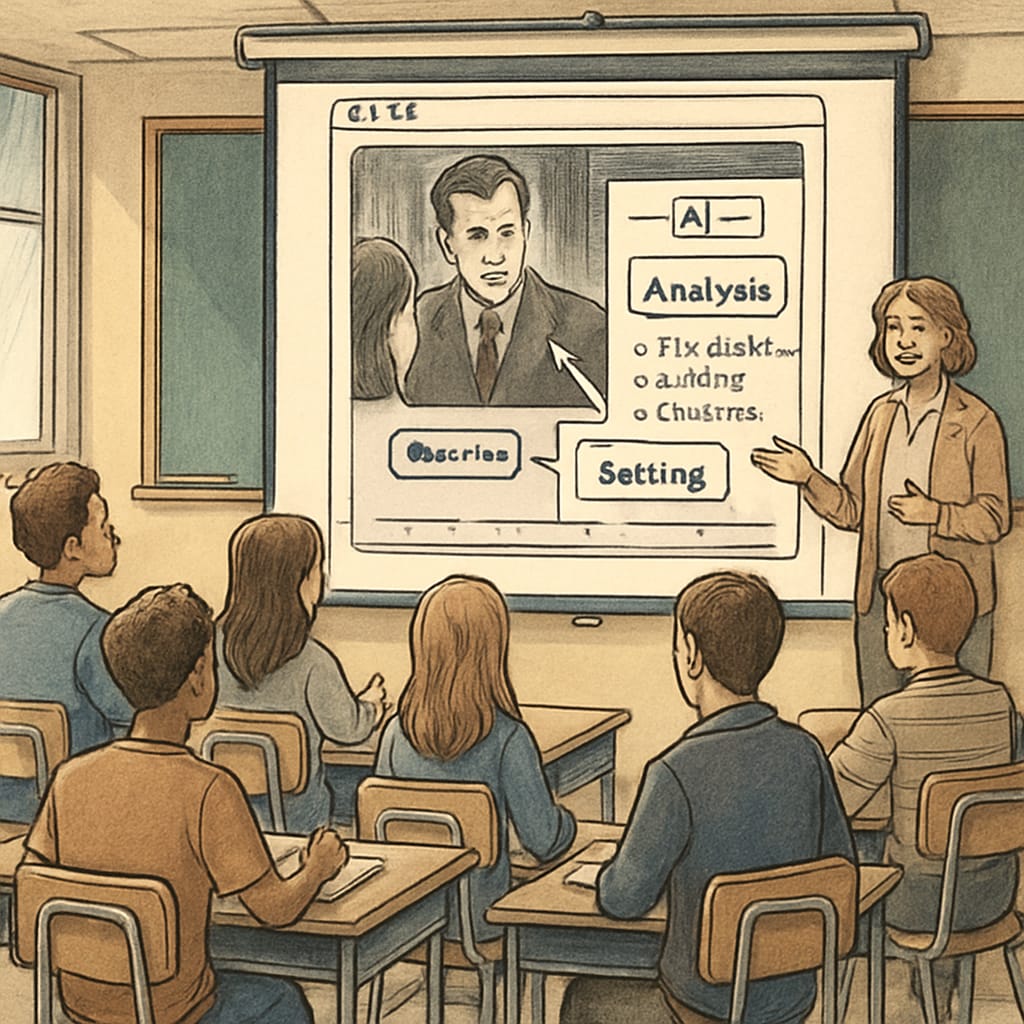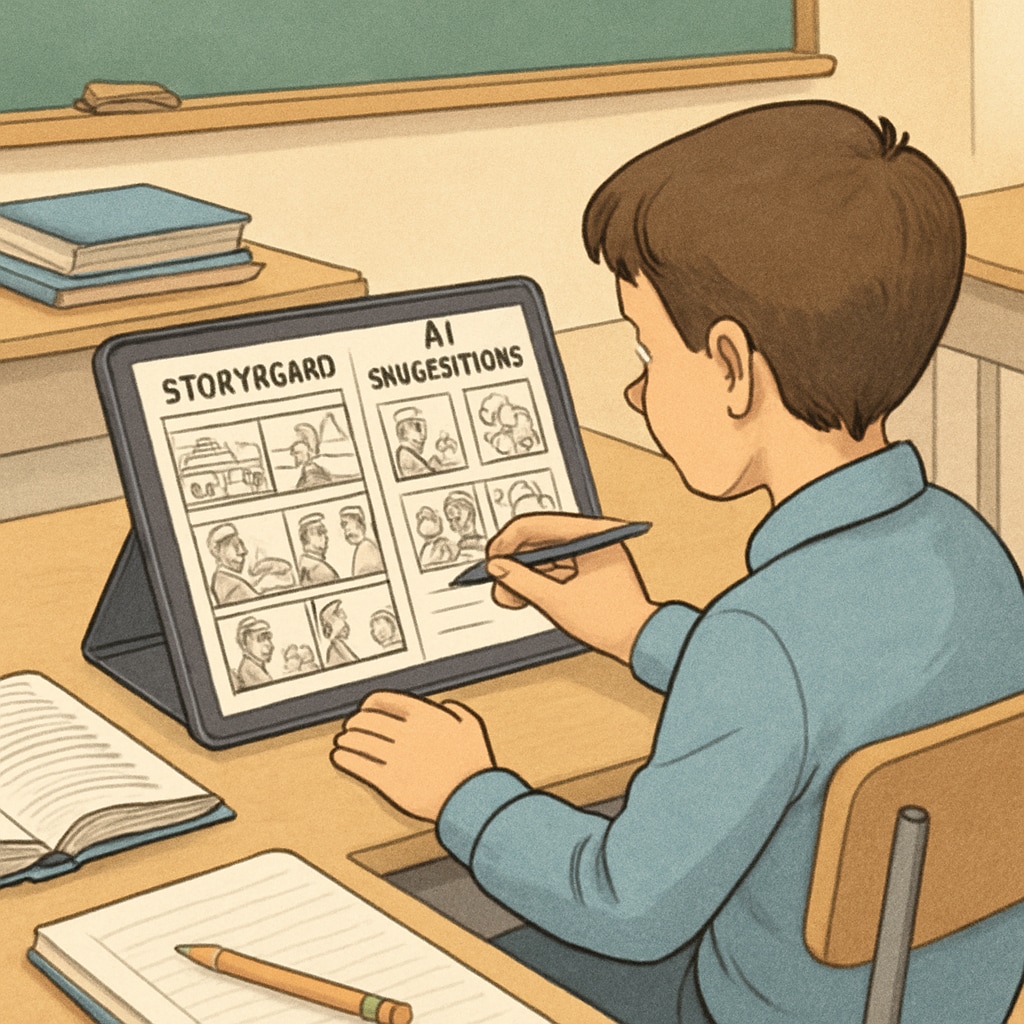In today’s digital age, the importance of media literacy in education cannot be overstated. By integrating AI writing prompts, media literacy, and educational resources into the classroom, educators can empower students in grades 9-12 with essential skills for critical thinking and visual storytelling. This article explores five innovative strategies that use AI tools to modernize and enhance media literacy education. These practical approaches offer free resources and structured activities to make learning both engaging and effective.
1. Using AI to Teach Critical Analysis of Media Content
One of the most significant benefits of AI is its ability to analyze vast amounts of data quickly. AI tools can help students critically evaluate media content by breaking down components like tone, bias, and factual accuracy. For example, platforms like ChatGPT can generate discussion prompts that encourage students to dissect the purpose and message of a film or news article. This guided approach fosters deeper understanding and helps students identify the subtle cues that influence public perception.
- Encourage students to analyze how lighting and sound influence mood in films.
- Use AI to compare different media portrayals of the same event.
- Discuss the role of algorithms in tailoring the media content students see online.

By leveraging AI for structured critiques, students develop the ability to question and interpret media responsibly.
2. Enhancing Visual Storytelling Skills Through AI-Powered Activities
Visual storytelling is at the heart of media literacy. AI tools can help students refine these skills by assisting with storyboarding, scriptwriting, and even editing. For instance, AI can suggest improvements to a narrative’s structure or recommend visual compositions that enhance storytelling.
- Students can use AI to create storyboards with suggested camera angles and scene transitions.
- AI-powered video editing tools can automatically highlight key moments in a student’s film project.
- Writing assistants provide feedback on dialogue, ensuring it aligns with the characters’ development.
With these tools, students not only learn the technical aspects of storytelling but also how to use visual elements to convey complex ideas effectively.

3. Promoting Ethical Media Creation in the AI Era
The rise of AI-generated content raises ethical questions about authenticity and intellectual property. Educators can use AI tools to teach students about responsible media creation. By introducing scenarios where students must decide how to credit AI contributions or avoid biases in their work, they gain a deeper understanding of ethical considerations in modern media.
For example:
- Students can use AI to create a marketing campaign and discuss the ethical implications of targeted advertising.
- Analyze AI-generated art or music, debating whether it qualifies as original work.
- Develop a code of ethics for AI-assisted journalism.
These activities prepare students for navigating the ethical challenges of working with AI in creative fields.
4. Bridging the Gap Between Media Literacy and Real-World Applications
One challenge in education is connecting classroom lessons to real-world applications. AI tools can help bridge this gap by simulating industry-standard workflows. For example, tools like Grammarly or Jasper AI can be used to teach copywriting for social media campaigns, while editing software like Adobe Premiere Pro, enhanced with AI functionalities, familiarizes students with professional filmmaking techniques.
Additionally, students can:
- Create data-driven media projects using AI analytics tools.
- Simulate newsroom environments with AI tools that assist in headline generation and layout design.
- Collaborate on international projects, using AI translation tools to overcome language barriers.
These hands-on experiences give students a competitive edge as they transition from school to career environments.
5. Providing Free and Accessible AI Educational Resources
Cost is often a barrier to introducing advanced tools in schools. Fortunately, many AI resources are free and easy to access. Platforms like OpenAI offer free trials for educators, while websites like Canva provide free templates for visual storytelling. These resources ensure that all students, regardless of their school’s budget, can benefit from cutting-edge technology.
Educators can find free AI tools for:
- Writing and editing prompts tailored to specific assignments.
- Generating visual content like graphics and storyboards.
- Analyzing and summarizing large volumes of text or video content.
By integrating these tools into lesson plans, teachers can provide students with a modern, inclusive education that prepares them for the future.
Conclusion: Transforming Media Literacy with AI
The integration of AI writing prompts, media literacy, and educational resources into classrooms offers transformative potential for 21st-century education. From enhancing critical thinking to refining visual storytelling, AI tools equip students with the skills they need to navigate and create in a complex media landscape. By adopting these five strategies, educators can pave the way for a more innovative and inclusive approach to learning.
For further reading on media literacy, visit Media Literacy on Wikipedia or explore educational resources at Britannica’s Media Literacy Guide.


